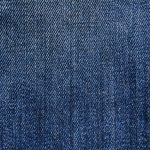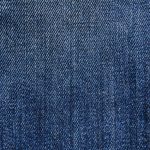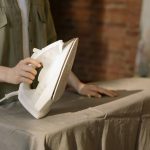You’ll find scuba bonded fabric is a smooth, thick textile that offers a slight stretch and excellent shape retention, making it great for durable, stylish garments. It feels lighter and sleeker than neoprene, with wrinkle resistance and a modern look that works well for everyday and activewear. Plus, it’s low-maintenance and comfortable. If you want to know how it’s made, its common uses, and care tips, keep exploring to get the full picture.
Table of Contents
Key Takeaways
- Scuba bonded fabric combines two layers for a smooth, thick, and slightly stretchy textile with a modern appearance.
- It resists wrinkles, maintains shape, and offers durability, making it ideal for structured, comfortable garments.
- Manufactured by bonding layers using heat, adhesives, or ultrasonic methods for strength and flexibility.
- Unlike neoprene, scuba fabric is lighter, smoother, and better suited for fashion and activewear.
- Commonly used in dresses, skirts, blazers, and performance wear for sleek silhouettes and shape retention.
Definition and Characteristics of Scuba Bonded Fabric
Scuba bonded fabric combines two layers of material fused together to create a smooth, thick textile with a slight stretch. When you work with it, you’ll notice its dense yet flexible feel, making it ideal for structured garments that still allow movement.
The fabric resists wrinkles and holds its shape well, so your designs look polished for longer. Its smooth surface gives a clean, modern appearance, while the slight stretch adds comfort.
You’ll find it’s also relatively durable and easy to care for, which is perfect if you want low-maintenance fabrics. Because of these features, scuba bonded fabric suits everything from fashion apparel to accessories, offering both style and function in one material.
The Manufacturing Process of Scuba Bonded Fabric
You’ll start by selecting high-quality materials that give scuba bonded fabric its unique texture and strength.
Next, the layers are carefully bonded using advanced techniques to guarantee durability and flexibility.
Throughout the process, strict quality control measures keep the fabric consistent and reliable for various uses.
Materials Used
Creating bonded fabric involves combining different materials to achieve strength, flexibility, and comfort.
When it comes to scuba bonded fabric, manufacturers carefully select components that enhance durability and texture without sacrificing softness.
You’ll find these key materials:
- Polyester: Provides excellent resistance to shrinking and stretching, ensuring the fabric keeps its shape over time.
- Spandex (Elastane): Adds stretchability, allowing the fabric to move with you while maintaining a smooth appearance.
- Neoprene or Foam Core: Offers thickness and structure, giving scuba fabric its signature plush feel and insulation.
Layer Bonding Techniques
To combine polyester, spandex, and neoprene into a single, cohesive fabric, manufacturers employ specialized layer bonding techniques.
You’ll find that heat pressing is a common method, where layers are fused under high temperature and pressure, ensuring a smooth, durable bond without stitching.
Another technique you’ll encounter is adhesive bonding, which uses a strong, flexible glue to join fabrics seamlessly.
Ultrasonic bonding is also used; it relies on high-frequency vibrations to melt and fuse the layers instantly, creating a clean, strong finish.
These methods help maintain the fabric’s stretch, thickness, and resilience.
Quality Control Measures
Although the bonding process guarantees a strong fabric, quality control measures are crucial to maintain consistency and performance in scuba bonded fabric production.
When you’re involved in manufacturing, you’ll want to implement strict inspections at every stage to catch defects early. Here are three key measures you should focus on:
- Visual Inspection: Check for surface irregularities, bubbles, or bonding flaws that affect appearance and durability.
- Adhesion Testing: Regularly test the bond strength between layers to ascertain the fabric holds up under stress.
- Dimensional Accuracy: Measure thickness and stretch to confirm the fabric meets required specifications for its intended use.
Differences Between Scuba Fabric and Neoprene
When you compare scuba fabric and neoprene, you’ll notice that their textures and uses set them apart.
Scuba fabric feels smoother and lighter, often made by bonding polyester or nylon with spandex, giving it stretch and structure. Neoprene, on the other hand, is a thicker, rubbery material originally designed for wetsuits, providing excellent insulation and buoyancy.
You’ll find scuba fabric works better for fashion and activewear due to its sleek finish and breathability, while neoprene is more functional in water sports because of its water resistance and durability.
Though both offer stretch and resilience, scuba fabric is less dense and more comfortable for everyday wear.
Understanding these differences helps you pick the right material for your project or garment needs.
Common Uses and Applications in Fashion
You’ll find scuba bonded fabric in many everyday fashion staples like dresses and skirts because it holds shape well and feels smooth.
It’s also popular in performance and activewear since it offers flexibility and durability.
Let’s explore how this versatile fabric fits into your wardrobe.
Everyday Fashion Staples
Scuba bonded fabric has become a go-to material for creating versatile everyday fashion staples. Its smooth texture and structured feel let you craft pieces that look polished without sacrificing comfort.
You’ll find this fabric in items that shift effortlessly from casual to chic.
Here are three common everyday fashion staples made from scuba bonded fabric:
- Sweater Dresses – They offer shape retention and a sleek silhouette, perfect for layering or wearing alone.
- Skirts – The fabric holds pleats and shapes beautifully, giving a modern twist to classic styles.
- Blazers – Scuba bonded fabric blazers provide a crisp, tailored look while remaining flexible and comfortable throughout your day.
Using this fabric, you can elevate your wardrobe with pieces that combine style and practicality.
Performance and Activewear
Although performance wear demands durability and stretch, scuba bonded fabric meets these needs while offering a sleek, modern look. You’ll find it in leggings, sports bras, and outer layers because it moves with you, resists wrinkles, and maintains its shape. Its water-resistant quality also makes it great for light rain or sweat. When you wear activewear made from scuba bonded fabric, you get both function and style, perfect for workouts or casual days.
| Feature | Benefit | Common Use |
|---|---|---|
| Stretch & Flex | Supports movement | Leggings, tops |
| Water-resistant | Keeps moisture out | Jackets, hoodies |
| Shape retention | Maintains sleek look | Dresses, skirts |
Benefits of Using Scuba Bonded Fabric
Because it combines durability with a smooth texture, scuba bonded fabric offers unique advantages for both fashion and functional uses. When you choose this fabric, you get more than just style—it delivers performance and comfort that stand out.
Scuba bonded fabric blends durability and smoothness for standout style, comfort, and performance.
Here are three key benefits you’ll appreciate:
- Shape Retention: Scuba bonded fabric holds its form well, so your clothes stay looking fresh and fitted even after multiple wears.
- Comfort: Its soft, stretchy nature lets you move freely without feeling restricted or uncomfortable.
- Wrinkle Resistance: You won’t have to worry about constant ironing, as this fabric resists creasing, keeping you looking polished.
Using scuba bonded fabric means investing in garments that look great, feel good, and last longer.
Care and Maintenance Tips for Scuba Bonded Garments
When you want your bonded garments to maintain their look and feel, following proper care routines is essential. Always check the care label before washing.
Typically, you should hand wash or use a gentle cycle with cold water to prevent damage. Avoid bleach and harsh detergents, which can break down the fabric’s structure.
After washing, reshape your garment and lay it flat to dry; never wring or twist it, as this can cause distortion. Ironing is usually unnecessary because scuba bonded fabric resists wrinkles, but if needed, use a low heat setting with a pressing cloth.
Store your garments in a cool, dry place away from direct sunlight to prevent fading. Following these steps will help you enjoy your scuba bonded pieces longer.
Popular Brands and Designers Using Scuba Bonded Fabric
Several leading brands and designers have embraced scuba bonded fabric for its unique blend of structure and comfort.
If you’re curious about who’s using this versatile material, here are three notable names you’ll want to know:
- Alexander Wang – Known for edgy, modern pieces, Wang incorporates scuba bonded fabric to give garments a sleek, sculpted look without sacrificing comfort.
- Ted Baker – This brand uses scuba bonded fabric to create polished, tailored outfits that hold their shape while feeling soft against your skin.
- Zara – As a fast-fashion giant, Zara leverages the fabric’s durability and stretch to offer trendy, affordable options with a sharp silhouette.
When you choose pieces from these designers, you’re getting the best of scuba bonded fabric’s form and function.
Environmental Impact and Sustainability Considerations
Although scuba bonded fabric offers impressive durability and style, you should consider its environmental impact before making a purchase. This fabric is often made from synthetic fibers like polyester and nylon, which are derived from non-renewable fossil fuels. Producing these materials consumes significant energy and contributes to greenhouse gas emissions.
Additionally, the bonded construction can make recycling difficult, leading to more waste in landfills. However, some brands are working toward sustainability by using recycled fibers or eco-friendly manufacturing processes.
When buying scuba bonded fabric, look for certifications or information on sustainable sourcing. By choosing responsibly, you can enjoy the fabric’s benefits while minimizing your ecological footprint. Being mindful of these factors helps you support a greener fashion industry.
Frequently Asked Questions
Can Scuba Bonded Fabric Be Recycled?
You might find it challenging to recycle scuba bonded fabric because it combines different materials. However, some specialized facilities accept it. Always check with local recyclers to see if they handle this mixed-fiber fabric.
Is Scuba Bonded Fabric Suitable for Swimwear?
You’ll find scuba bonded fabric suitable for swimwear because it’s stretchy, durable, and quick-drying. It offers a smooth fit and good shape retention, making it comfortable and stylish for your swimming activities.
How Does Scuba Bonded Fabric Perform in Extreme Temperatures?
Wondering how scuba bonded fabric handles extreme temperatures? You’ll find it resists cold well due to its insulating properties but may feel warm in high heat. So, you’ll want to take into account the climate before choosing it.
Can Scuba Bonded Fabric Be Dyed at Home?
You can dye scuba bonded fabric at home, but it’s tricky since it resists absorption. Use fabric-specific dyes and follow instructions carefully to avoid uneven colors or damage. Testing a small piece first really helps.
What Is the Cost Comparison With Other Fabrics?
Comparing costs, you’ll find scuba bonded fabric’s price pleasantly positioned between pricey performance fabrics and cheaper cottons. It balances budget and benefits, offering you durable, stretchy style without the steep spend of some specialty textiles.
- Tetron Fabric for Marine Applications: Durability and Use Cases - June 18, 2025
- Tetron Fabric for Outdoor Furniture: Weather Resistance and Care - June 18, 2025
- Tetron Fabric for Wall Coverings: Style and Application Tips - June 18, 2025







